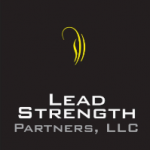The past couple of weeks I have been in conversations with peers from Sourcing Interest Group (SIG), ProcureCon IT and Institute for Supply Management (ISM), and everyone is concerned about tariffs. A colleague quoted West Wing, “Do not be hypnotized by complexity,” meaning don't overthink this. This has similarities to COVID's impact on supply chain 5 years ago. Most manufacturing companies have made contingencies for supply chain issues after previous disruptions. Once again we are challenged to rethink procurement/finance processes in order to respond quickly to the changes.
Here are 15 actions we can take now as Procurement Professionals even though this issue seems to change by the day:
1. Act Now- Create a strategy/quick response team to address changes as they occur. This team should have leadership, product owners, Procurement and Finance, etc.
2. Have a Total Cost Mindset when you evaluate impacted goods/services
3. Partner with your top 20 suppliers and look for joint solutions that minimize or offset the increases. Focus on the highest risk to your company
4. Review current contract terms that protect your company from unreasonable increases and specifically address tariffs. Tariff terms are likely tied to your INCO terms.
5. Discuss with your suppliers which commodities and the specific components may be impacted.
6. Do a BOM analysis and list which components have exposure. Agree that other components will not increase.
7. Ask for tariff impact estimates up front and not afterward in the invoice. Seek to agree with supplier that fees for tariffs should be itemized and not a permanent increase.
8. Review inventory and demand – can you pre-purchase existing supplier stock not subject to the current tariffs.
9. Did your supplier previously add capacity outside tariff countries or onshore? Work with supplier to be 1st in line for these locations.
10. Review your Tier 1 and 2 providers and seek alternatives within the United States.
11. Update your legal templates with well-defined terms for change. Ensure you have right to audit of why and when the price will change
12. What are the auditable documents that we can request of our partners to indicate cost increase due to tariff implications? Is this updated to the Harmonized Tariff Schedules?
13. Create schedule with sub-annual contracts with clearly defined ways for price changes and metrics. Define surcharges based on raw components.
14. Set internal policy/procedure on frequency your company can accept pricing increases (i.e. Move to quarterly review and price increases can only occur after review/audit of new pricing.)
15. For global companies, source in country and/or deliver from non-tariff countries. If you are reshipping tariffed items from the US because you are configuring onshore, you may be paying double tariffs.
If you act rational in the face of tariff fears, you will know how to and when to partner with suppliers and push back on suppliers. Old sales saying: "Where there is fear, there is money to be made."
What else are you doing to be prepared?
#Tariffs #Procurement #SourcingInterestGroup #SIG #ProcureConIT #ISM

